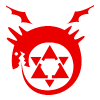I saw also that a few people mentioned unlimited zoom and real time projectiles, which are great features to have in an RTS. (They’re also both present in my game.) Unlimited zoom is not always necessary, and it’s going to be much more difficult if the game has actual terrain to render, but it’s certainly a nice feature to have and it gets me to my broader point; that it makes it easier for the player to see the battlefield and manage his armies, without taking control away from the player. For me, that’s one of the core design philosophies for good RTS gameplay: make it easy for the player to do what he wants to do, as long as the computer isn’t actually making decisions for the player.
One of the problems I see with some RTS that hurts the genre’s appeal to more casual or simply more laid-back players is the artificially inflated APM required to execute basic tasks. The most blatant example of this kind of mechanical obstacle I can think of (apart from just bad pathfinding) was the selection cap in the original Starcraft, where you could only select 12 units at a time. If the player wanted to move more units, you had to select them in separate groups and give the order multiple times. That’s multiple physical actions (selecting and ordering each sub-group) to accomplish one theoretical action that the player actually wants (“move my army here.”) There are some other more common design decisions, such as the way production is handled, that can also contribute to the stressful and frustrating nature of RTS games. Games where the player has to pay for units up front before starting production demand much more attention than the C&C/Grey Goo/SupCom approach, where units can be queued up at no initial cost, and automatically deplete your resources as they are constructed.
Overall, RTS controls have gotten more intuitive since the early days, but I think there are still some ways to further streamline the process without alienating the enthusiast audience. One of my examples is the ability to draw lines on the map and have a group of units move into position all at once. Say you want to form up in a concave arc facing the enemy (a common tactic in RTS games) this can now be done with a single sweep of the mouse, rather than dozens of individual orders. I don’t see this as excessive automation, any more than say an attack-move command is, since the player already knows exactly what he wants to happen, and is inputting all the data points manually. (Video showing how this is useful: )
Ultimately, I think core RTS game design can be viewed as a zero sum game in terms of how players need to split their attention. I consider there to be three primary activities in RTS gameplay: 1) strategic decision making (what to build, where to attack, etc.) 2) active unit micro (combat tactics, where each player responds to the other’s movements) and 3) passive micro/macro (tasks such as producing units, where the opponent’s actions don’t directly affect what the player is doing.) If you decrease the difficulty or effectiveness of one of these three tasks, the other two will become proportionally more important, so RTS gameplay design boils down to choosing what kind of tasks the player is going to focus on. I find that a mix of mostly 1) and 2) is the most appealing, although not necessarily optimal for an esport level of competitive play, but everyone has their own preferences. There’s quite a lot of other factors that go into making a good RTS of course: the story, the mission design, the uniqueness of the units, and so on, but this is the most concise analysis I can come up with for evaluating the core gameplay of an RTS and defining what makes that activity “fun.”
















